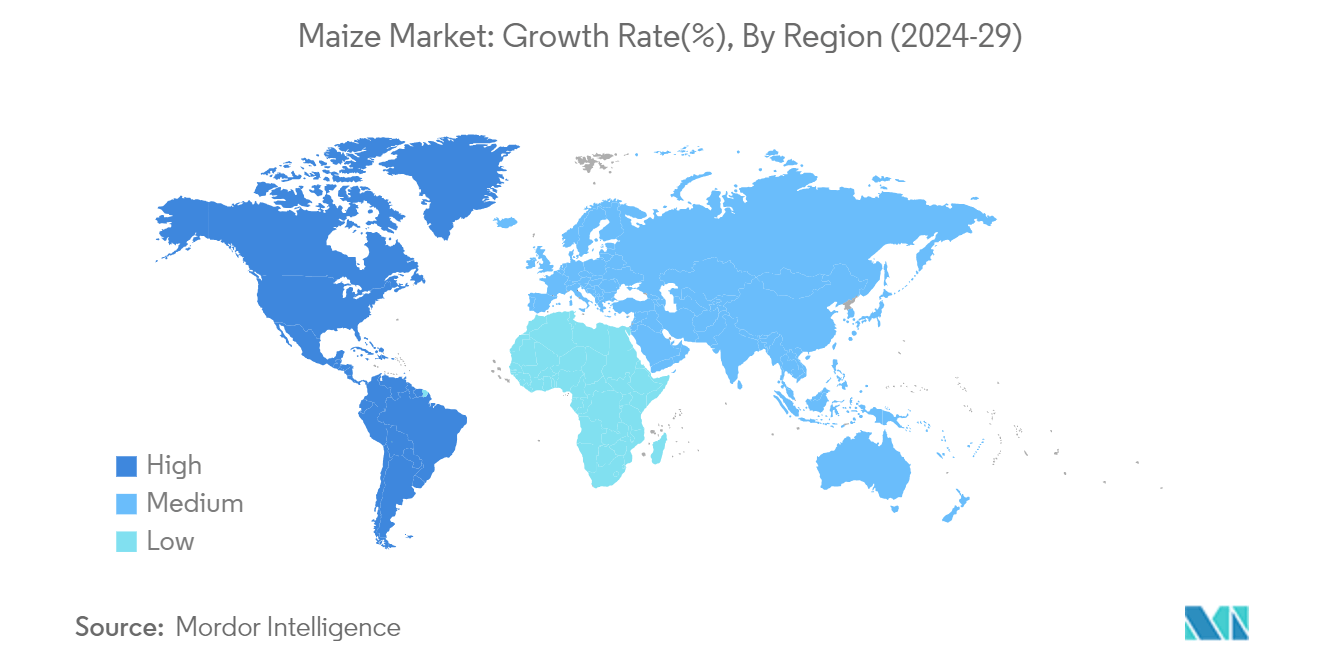Market Trends of Maize Industry
Increase in Demand for Animal-based Protein Sources
Population growth, rising incomes, and urbanization have driven increased livestock consumption and demand for animal-based proteins such as meat, milk, and eggs. Beef, pork, poultry, and fish remain the most widely consumed protein sources globally, according to a major livestock industry trade organization. In February 2024, the National Cattlemen's Beef Association released a consumer insights survey, funded by the Beef Checkoff program. The survey revealed that 83% of consumers eat
poultry at least once a week, followed by beef (70%), pork (46%), fish (41%), and meat alternatives (25%). Chicken emerged as the top protein choice at 44%, followed by beef (35%), fish (12%), plant-based meat alternatives (5%), and pork (4%). Notably, many consumers who choose plant-based meat alternatives also continue to consume conventional meat. These factors drive the demand for maize as feed, supporting the market's growth.
Maize is a crucial ingredient in compound feed for various livestock, including poultry, swine, ruminants, and aquaculture. As demand for animal feed increases, global maize production has expanded. According to the FAO, global maize production in 2022 increased to 1.21 billion metric tons, a 3.8% rise from the previous year. Trade has also increased, with the ITC Trademap reporting that global corn exports valued over USD 5306.8 million in 2023, a 2.2% increase from 2021.

North America to Dominate the Maize Market
North America is anticipated to be the largest maize market during the forecast period, followed by Asia-Pacific. This dominance is primarily due to the extensive use of maize as animal feed. According to the Food and Agricultural Organization (FAO), the United States was the world's largest maize producer in 2022, yielding 348.8 million metric tons, which accounted for 30.0% of global production. Maize is crucial to the US economy, with most domestic production used for livestock feed and ethanol production. The crop is also used in manufacturing various food and industrial products, including cereals, alcohol, sweeteners, and by-product feed. The United States is also a major maize exporter due to its high production capacity. In 2022, the country exported over 45.9 million metric tons of corn, representing more than half of global corn exports. The value of these exports reached USD 13.7 billion in 2023.
Mexico is also among the world's top maize producers. According to FAOSTAT, the country produced 26.6 million metric tons of corn in 2022. This increase was primarily driven by demand for animal feed, reflecting changing dietary patterns and increased expenditure on animal-sourced proteins. As maize finds applications in various industries, its demand is projected to grow during the forecast period.


